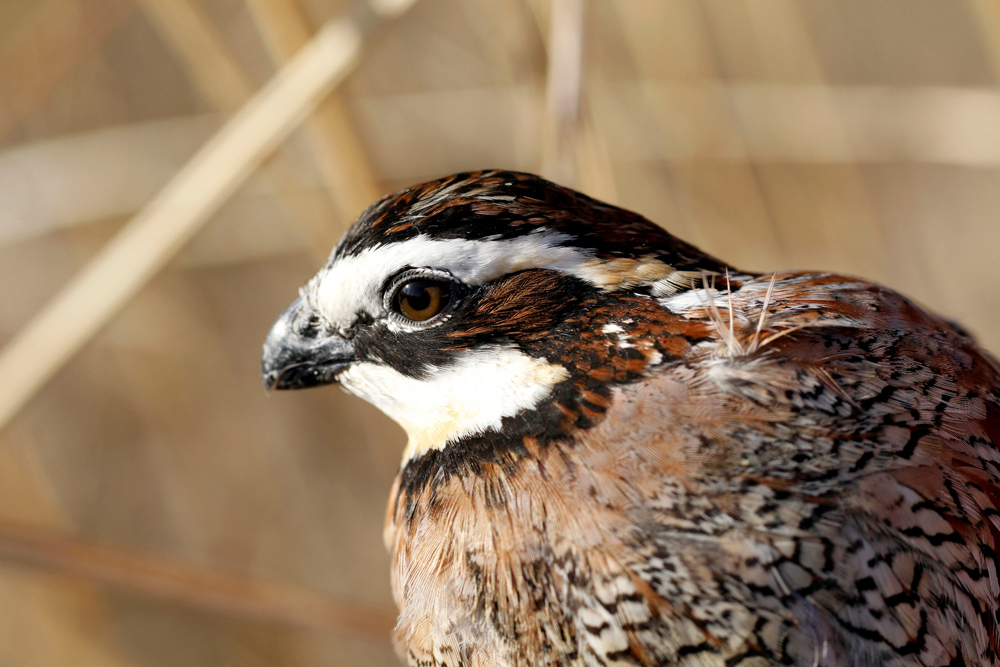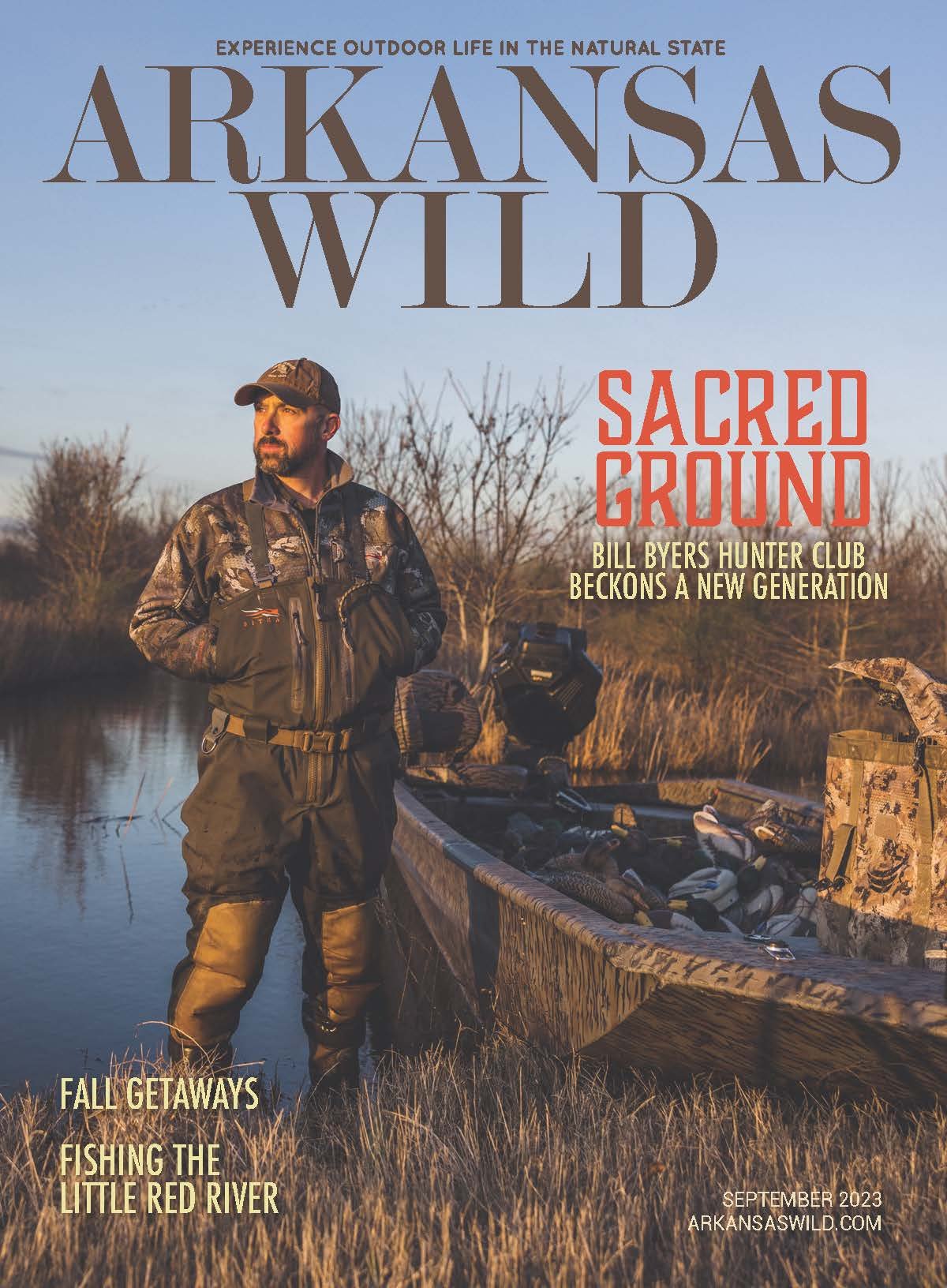Where The Wild Things Are
Leaders: Conservation at the forefront for many
By Dwain Hebda
Arkansas’s leading conservation groups say while the job of conservation is never really finished, there’s currently a lot to feel good about in The Natural State. Environmental and habitat issues are at the forefront of many people’s minds, especially as Arkansas's wild spaces are used and enjoyed in more ways by more populations.
“There are more people engaged in wanting to help with conservation, which is great,” said Scott Simon, executive director of the Arkansas chapter of The Nature Conservancy. “People are interested in volunteering, they’re interested in helping conserve their own land, they’re interested in acquiring land to help protect rivers.
“What we’ve also seen, which I think is something that in Arkansas we’re are learning how to work through, is a shift in the expectations of how we’re going to use our natural resources. In the past, in a more agricultural setting, that was the primary economic driver for an area. But as new people have moved in, new interests, hiking and biking and floating becomes an important part of the economy.”
Simon said many of the biggest strides have been made as a result of a spirit of cooperation that’s unlike almost any found in the United States. This allows the state to attack major projects with surprising speed.
“The No. 1 thing that we’re getting right in Arkansas is Arkansas is No. 1 in the country for conservation partnerships,” Simon said. “Organizations, agencies and landowners are working together for the betterment of our state, better than anywhere else in the country. It’s fun and it’s productive.”
“In fact, some states there’s turf battles, turf wars,” agreed Chris Colclasure, deputy director of The Arkansas Game and Fish Commission. “In Arkansas, when you talk about working in the realm of conservation, everybody gets it. I mean, we live in The Natural State; there’s a lot of things to do here outside, whether you like to hike or hunt or paddle or fish or drive the roads and just enjoy the state.”
One of the reasons conservation issues are appreciated in Arkansas is because of the many points of access for people to experience the natural world, be it in the forest, over mountain trails, on the water and through the state’s acclaimed state parks.
“[Conservation] partners share the same passion for making sure future generations get to enjoy [the outdoors] in the same way that we have,” Colclasure said. “It’s really impressive; when I communicate with other states, they’re often shocked how much we’re able to get done just through all the partnerships that we have.”
On the other hand, some of the most pristine areas hide in plain sight, such as the natural areas owned and managed by the Arkansas Natural Heritage Commission. The ANHC maintains 75 natural areas throughout Arkansas, covering more than 70,000 acres. Despite this, said Director Bill Holimon, many Arkansans don’t know these places exist, much less understand the agency behind them.
“Most of the time when I go to a new group to talk, they have never heard of us. We are a tiny agency but we do big things,” he said. “The Arkansas Natural Heritage Commission protects and manages some of the best examples of Arkansas’s natural landscape for future generations of Arkansas. We are the clearinghouse for information on Arkansas’s most at-risk plants and animals and provide technical assistance for land management.”
Holimon said the agency’s desire is for more people to experience the agency’s natural areas, which capture the landscape as it was before permanent settlement. But this provides its own issues as more people means more potential threats to the ecosystem on display.
“We want to get people out there to see that habitat, to see what the landscape looked like at the time of settlement because there’s very little of that left,” he said. “That itself is a challenge and one we’ve tried to address. Because, if you don’t do it how will people know about this? They need their need eyes on the ground.”
Arkansas Conservation:
Three Big Wins
WOODPECKERS
Thanks to the joint effort of by the Arkansas Game and Fish Commission, the Natural Heritage Commission, The Nature Conservancy and timber companies, strides have been made to grow populations of the red cockaded woodpecker in South Central Arkansas. Habitat has been improved over 30,000 acres and 11 active groups of the endangered birds have formed at Warren Prairie much faster than expected.
ACREAGE
Conservation agencies, such as the Arkansas Natural Heritage Commission, continue to purchase and protect environmentally sensitive ground. A recent tally of 3,000 acres in Benton County, 930 acres at Warren Prairie Natural Area in Bradley and Drew counties and almost 2,700 acres in the Longview Saline Natural Area in Ashley County merely scratch the surface. Even more promising are the multiple thousands of private acres landowners are managing specifically to improve habitat of resident species.
WATERWAYS
The Nature Conservancy, in cooperation with various partners, has spearheaded several important initiatives to help protect and restore waterways. These efforts over the past decades have resulted in 30 million trees planted over tens of thousands of acres and 25 miles of river corridor resuscitated in just five years. Additional measures, including those formalized by the Arkansas legislature, address runoff from dirt and gravel roads, a major sources of river life-choking silt.
PHOTOGRAPHY COURTESY OF: Arkansas Game and Fish Commission and Nature Conservancy
Eyes on the Future:
Three Big Challenges
FUNDING
Hunting and fishing license sales have crept steadily downward over the past five years, which is cause for alarm among agencies such as Arkansas Game and Fish which rely on the fees for a good chunk of funding. Fishing license sales are down 9 percent and hunting licenses down 10 percent, straining an agency that owns and maintains 385,000 acres and co-manages another 3 million acres. Alternate sources of entertainment and recreation, as well as the changing family dynamic, are widely blamed for the decrease in outdoor activities among youth.
USAGE
Outside of hunting and fishing, numbers are up for outdoor activities such as hiking and cycling, which puts an added strain on state parks and natural areas. Human impact in the way of litter and disturbed plant and animal habitat is a growing concern in many areas, giving rise to issues ranging from ongoing trail maintenance, to trash pickup, to how to educate the public on minimally invasive recreation habits.
SPECIES
According to the U.S. Fish and Wildlife Service, Arkansas is home to four species of threatened mammals; five species of birds; one insect, seven species of fish, crayfish and amphibians; 13 species of mussels and four plants. Two additional species have been proposed for the list and two are extirpated, meaning they no longer exist in the wild in Arkansas. In all cases, habitat destruction was at least a contributing factor, and in most cases the primary factor, in the species’ decline.







